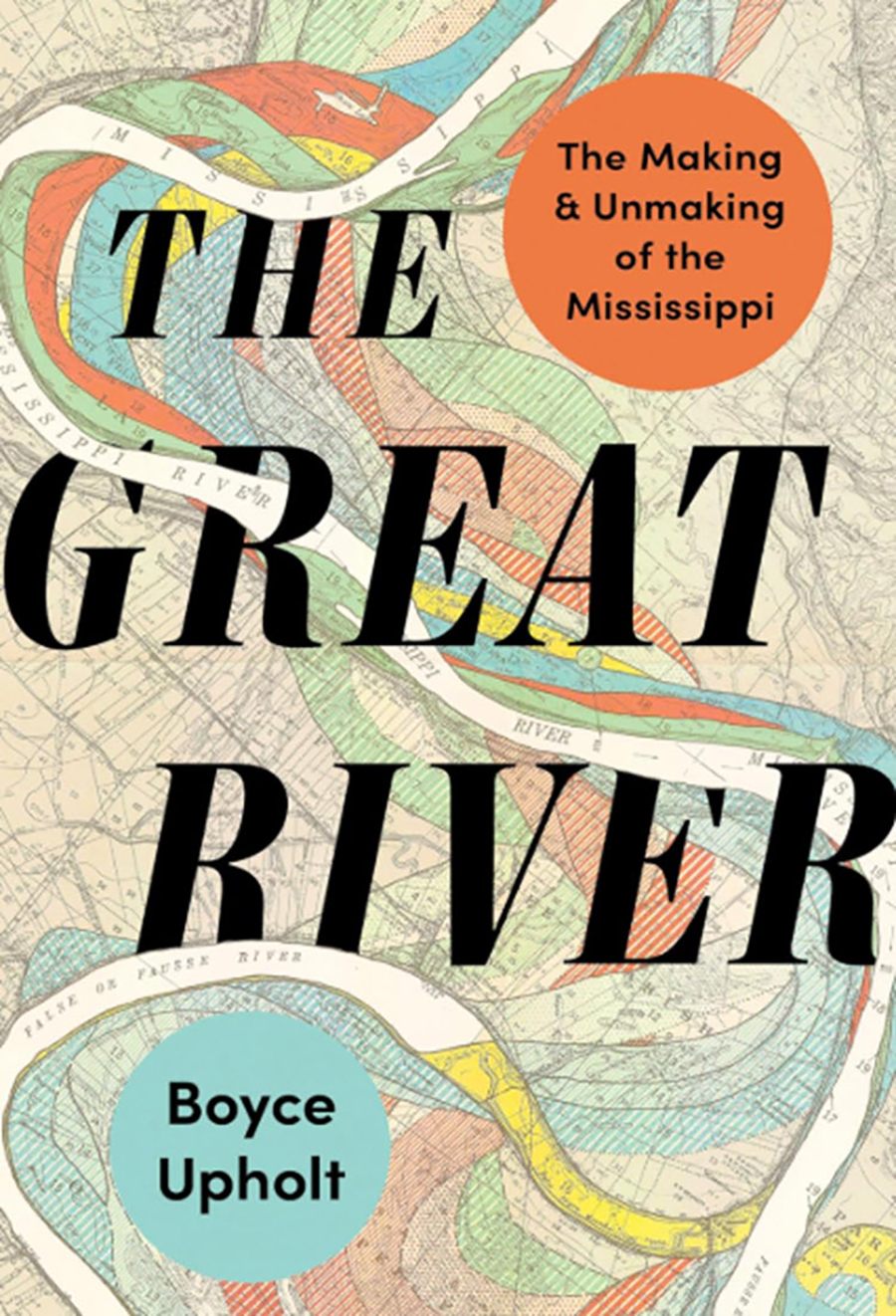The Great River: The Making and Unmaking of the Mississippi, by Boyce Upholt. New York City: W.W. Norton & Co. Inc., 2024; 352 pages, $29.99.
The most broadly famous book about the Mississippi River is almost certainly Adventures of Huckleberry Finn, published in 1884. However, prior to that, writer Samuel Clemens had published Life on the Mississippi, a memoir about his years first as an apprentice and then a licensed steamboat pilot, until the Civil War halted traffic on the Mississippi.
Further reading:
- Mississippi River Basin Model celebrates 80 years
- 5 things you didn’t know about James Eads and his South Pass Navigation Works
- Inland waterways receive C- on latest ASCE infrastructure report card
That extensive experience deeply informed some of the writer’s works, not to mention his chosen pen name. “Mark twain,” meaning a depth of two fathoms (12 feet), was a term frequently called out on steamboats to indicate a safe depth for proceeding.
 W.W. Norton & Co. Inc.
W.W. Norton & Co. Inc.Although he never explicitly says so, The Great River author Boyce Upholt may well have been seeking to emulate Twain and draw from a similar well of experience when he “talked (his) way onto the crew” of a highly experienced Mississippi River guide in 2015. That lengthy trip, camping on the riverbanks in the evenings, “sparked an obsession,” Upholt writes, driven by what he says felt like a separate world. “It was not a typical wilderness, perhaps, but it was as wild a place as I had ever been.”
That obsession included not only the assembly of a significant library of others’ writings on the Mississippi, but also “hundreds of days, thousands of hours, paddling the river, sleeping on its banks through snowfall and blazing heat and thunderstorms strong enough to blow down trees.”
The Great River tells an expansive, deeply researched story of the most important, most mythologized, and most highly engineered river in the United States. In fact, it traces the river’s history to well before the land that it traverses was even part of the still-nascent country and to when the Mississippi and its vast watershed was the first great “undiscovered” American frontier.
However, the book, while extolling the mighty river’s many virtues and at times peculiar beauty, also makes no bones about its condition today, calling it “the victim to some of the world’s most intense and elaborate engineering” and that as a consequence “the river we’ve built is coming apart.”
This manifests most obviously in the river reaching flood stage far more frequently than in the past as well as in the increasing frequency with which major spillways must be opened, such as the Bonnet Carré, an ASCE Historic Civil Engineering Landmark that helps protect New Orleans’ levees from breaking. As the author explains, these crises result in part because the river has been “locked in place” in many ways and is no longer able to “meander” naturally within its floodplain.
Upholt covers the river’s history in three broad parts: the ancient version of the Mississippi up to the time of the Louisiana Purchase in 1803; from then until the Great Flood of 1926 and its aftermath; and then its more modern history and a look into its future. From somewhat belated geological studies done in the 1940s about the river’s past configurations to the triumphs and pitfalls of the U.S. Army Corps of Engineers’ unceasing efforts to reshape and control the river based on the country’s perceived needs to the difficult decisions still to come, The Great River plunges deep into the muddy history of all of it.
Though The Great River has received wide acclaim as a work of natural history, Upholt, a widely published and award-winning journalist and essayist who has made his home in the Mississippi Delta since 2009, stresses something about his own background. “I have aimed in this book to be as rigorous as any scholar,” he writes, “but I am not a historian, and this book is not a standard history.”
Nonstandard though it may be, however, there is little doubt that The Great River is a massive contribution to our collective understanding of this country’s most important waterway, what we can learn from our attempts to tame it, and how those lessons can be applied elsewhere. And thanks to Upholt’s considerable skills for storytelling, turns of phrase, and vivid imagery, the voyage through the Mississippi’s rich and complex history is as engaging as it is educational.



